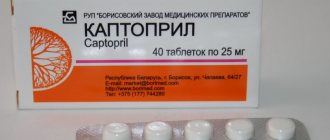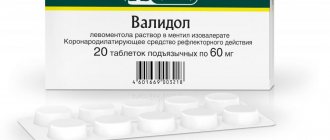Diuretics remove excess fluid from the body. Stimulate urine excretion by inhibiting the reabsorption of sodium ions in the renal canals. They have many useful properties. They are widely used in medicine for the treatment of disorders and diseases. The drugs are used for: peripheral edema, for the normal functioning of the kidneys, removal of toxins, removal of excess fluid from cavities, diseases of the heart and blood vessels.
There are several different types of diuretics, differing in chemical structure and mechanism of action. They are divided into: short-acting saline, potassium-containing, taizide. Diuretics are used for weight loss. Removes large amounts of fluid and reduces weight. They have a cleansing effect and remove decay products. They have a positive effect on the condition of the skin and the health of the body. During the period of use, you must adhere to a certain diet and exercise regularly.
Medicinal and herbal diuretics.
September 23, 2021
21932
4.6
1
Content
- How to choose a diuretic
- What are the types of diuretics?
- Classes of diuretics and indications for their use
- The best diuretics
- Hydrochlorothiazide
- Furosemide
- Indapamide
- Veroshpiron
- Torasemide
- Triampur compositum
- Diuver
- Dog-rose fruit
- Diuretic collection
- Juniper fruits
The doctor prescribes diuretics for various edema, hypertension, for the prevention of kidney stones, etc. It is no secret that some women even try to lose weight with the help of diuretics, but this is dangerous to health. The fact is that diuretics, together with liquid, remove potassium from the body - muscle contraction (including the heart muscle) is disrupted. That is why such drugs should be prescribed exclusively by a doctor, taking into account the underlying disease, possible contraindications and side effects.
Read also How to treat dehydration: 5 solutions for rehydration What drugs for dehydration are most often prescribed by doctors?
Mechanism of action of diuretics
The main mechanism of action of diuretics is their effect on the kidneys. First of all, on the structural and functional unit or nephron, where the processes of glomerular filtration, tubular reabsorption and secretion occur. To better understand the action of diuretics, it is necessary to consider the process of kidney functioning and the mechanism of urine formation.
Each kidney contains approximately 1 million nephron formations that do not communicate with each other. They consist of a vascular glomerulus (glomerulus), a glomerular capsule and tubules. In the renal glomerulus, plasma is filtered from the capillaries into the capsule cavity. The endothelium of the capillaries does not allow the penetration of blood elements and proteins.
The resulting filtrate is called primary urine. Subsequently, it penetrates the kidney tubules. The filtration process in the kidneys occurs due to the difference between the arterial and oncotic pressure of the blood plasma. A decrease in blood pressure leads to a decrease in the filtration rate in the kidneys. Increasing blood pressure increases the filtration rate.
The glomerular filtration rate depends not only on the blood supply to the kidneys, but also on the number of functioning nephrons. On average, glomerular filtration in an adult is 100 ml per minute. Every day, the human body filters about 200 liters of liquid. Urine is released on average about 2 liters. About 99% of primary urine is reabsorbed in the tubules.
The reabsorption process occurs throughout the nephron. To increase the amount of urine excreted, the glomerular filtration rate must be increased. The process of urine formation ends in the distal nephron and collecting ducts. Transport processes are regulated by hormonal influences. Taking diuretics helps increase the rate of urine formation. Reduce the amount of primary urine that is affected by the reabsorption process.
The clinical use of diuretics almost universally preceded the localization of their site of action. The consequence of diuretic specificity predicts clinical use and side effects, and the proximity of sodium transporters, one to another, often dictates the potency or effectiveness of the diuretic. All diuretics act by inhibiting the normal transport of sodium from the filtrate into the renal tubular cells. This movement of sodium into renal epithelial cells from the apical side is facilitated by a number of transporters, the function of which in turn depends on adenosine triphosphate (ATP), a Na-K dependent cotransporter on the basolateral side of the cell. Growing understanding of the physiology of sodium transport has generated new opportunities for the development of diuretics.
How to choose a diuretic
There are specific factors to consider if you choose a diuretic.
- Speed of action.
There are diuretics for emergency use: if you need to quickly lower high blood pressure (used in combination with other drugs), remove morning puffiness under the eyes. You should not take such medications often because they are addictive. Long-acting diuretics are prescribed to treat hypertension and edema associated with poor heart and liver function. - Pregnancy and breastfeeding.
Any diuretic medications are prohibited for pregnant and lactating women. And only in cases where a pregnant or lactating woman has a threat to her health and life, is it possible to use them. Usually this phrase sounds like “the benefit to the mother outweighs the risk to the fetus.” The exception is practically harmless herbal diuretics, but a woman should talk to her doctor before using them. - Tendency to allergies.
People with allergies may experience an undesirable reaction to both the active ingredient of the diuretic drug and its minor components. If you are allergic, consult your doctor before treatment.
In addition to diuretic medications, mild herbal remedies are often used. They are usually prescribed in the complex treatment of cystitis, urethritis, etc. Herbal diuretics not only remove excess water, but also relieve inflammation.
Drinking diuretics for weight loss is dangerous - the heart muscle suffers
Photos from open sources
Diuretics: what are they, why are they prescribed?
The term "diuretics" is quite common. But few people know what they are and how to take them correctly. In simple terms, diuretics or diuretics are medications that remove excess fluid from body tissues. At the same time, cleaning occurs from:
- toxins;
- salts
Attention! When taking diuretics, it is important to understand their mechanism of action. It is quite simple - the components of the drug act on the body in such a way as to enhance the outflow of fluid that is excreted naturally.
As a result, the total blood volume decreases and the load on the body decreases.
Sites of action of diuretics
Diuretics are divided into several categories:
- loop - the most powerful of all diuretics are prescribed for serious diseases, but have a short-lived effect and simultaneously remove potassium;
- thiazides are effective and safe even for newborns, but with regular use and if the dosage is exceeded, they cause potassium removal and an increase in blood sugar levels;
- potassium-sparing - have a long period of action and are successfully combined with other drugs, but in monotherapy the result will be weak;
- carbonic anhydrase inhibitors - prescribed in strictly defined circumstances, as they give a very insignificant effect;
- of plant origin - a practically harmless and gentle diuretic, which is not suitable for serious diseases.
There are many reasons for prescribing diuretics:
- various kidney diseases;
- cardiovascular diseases;
- endocrinological disorders;
- allergy;
- PMS;
- pregnancy;
- individual reaction of the body to elevated environmental temperatures.
Diuretics are usually perceived as a first aid medicine for edema. And they give good results. But uncontrolled use can cause serious harm to the body.
The list of negative consequences includes:
- potassium withdrawal;
- addictive effect;
- water-electrolyte imbalance;
- convulsions;
- decrease in pressure;
- arrhythmia and more.
Therefore, you can start taking it only in consultation with a specialist.
Anti-edema medications are often used for weight loss. And indeed, in a week the drugs can help you lose up to 5 kilograms. But this process has nothing to do with real weight loss. The effect can be achieved by removing fluid from the tissues and it is not always superfluous. Therefore, there is a high risk of getting dehydration, and with it:
- general deterioration of health;
- drying of the skin;
- weakness.
Diuretics for excess weight are indicated in combination with other measures and only in very dosed doses.
Let's look at Diuretics video
What are the types of diuretics?
All diuretic drugs are divided into several categories: according to their spectrum of use and mechanism of action.
- Loop diuretics.
These drugs have the strongest effect (they begin to act literally a few minutes after administration), but the effect ends just as quickly. Such drugs are well suited for the treatment of hypertension and heart failure. But loop diuretics have a significant disadvantage - along with water, they remove potassium from the body, which is fraught with the development of arrhythmia. - Thiazide diuretics.
Another effective diuretic drug. They not only get rid of excess fluid, but also dilate peripheral vessels. Thiazide diuretics also reduce the response of blood vessels to adrenaline, so they spasm less. Such diuretics are also prescribed for the treatment of urolithiasis. Among the “side effects” are the excretion of potassium and an increase in uric acid, which can then accumulate in the joints and cause gout. - Potassium-sparing diuretics.
Such diuretics do not remove potassium from the body, protecting the patient from various heart complications. But these drugs are not as potent as the previous ones. - Osmotic diuretics.
This group of drugs reduces blood plasma pressure - excess water is quickly removed from the tissues, swelling goes away. The pressure in the tissues and in the plasma becomes the same. Typically, osmotic diuretics are prescribed to relieve swelling of the brain, lungs, and high intraocular or intracranial pressure.
History of the origin of diuretics
Over the years, scientists have tried to discover organic and inorganic substances to treat edema. In the early 16th century, weak diuretics were used. Such as sea onion and calomel. In the 20s of the last century, people began to use mercury-containing substances to reduce swelling.
In 1950, the first taizide diuretics, chlorothiazide and hydrochlorothiazide, were synthesized. They are close in chemical structure to sulfonamides. In 1960, the structure of substances was modified. More effective loop diuretics, furosemide and ethacrynic acid, have been created. Diuretics with antikaliuretic activity have been synthesized. The drugs began to be widely used in medicine to treat diseases.
Classes of diuretics and indications for their use
Main indications for the use of diuretics of various classes
| Diuretic class | Indications |
| Osmotic | Edema of the brain, lungs, acute attack of glaucoma, barbiturate poisoning |
| Carbonic anhydrase inhibitors | Edema due to pulmonary heart failure, glaucoma, epilepsy |
| Loop | Hypertensive crisis, cerebral edema, chronic renal failure, poisoning with water-soluble poisons |
| Thiazides and thiazide-like diuretics | Hypertension, cardiovascular failure, liver cirrhosis, nephrosis, pregnancy nephropathy, glaucoma |
| Potassium-sparing | Hypertension, heart failure, liver cirrhosis, hypokalemia during treatment with diuretics of other groups |
| Vegetable | Renal edema, whistitis, chronic renal failure |
| Xanthine derivatives | Hypertension, heart failure (in complex therapy) |
Hydrochlorothiazide
One of the most effective means for removing excess fluid and sodium salts from the body. Hydrochlorothiazide is prescribed for diseases of the kidneys, heart, lungs, to reduce blood pressure and reduce swelling. The drug does not form metabolites and is excreted unchanged by the kidneys. The maximum effect of the diuretic is achieved 4 hours after administration, and it lasts for 12 hours. Patients about it has a pronounced diuretic effect, any swelling quickly goes away, it is inexpensive. Among the disadvantages is a large list of “side effects” and the removal of important microelements from the body (including potassium and magnesium).
Hydrochlorothiazide
OZON, Russia; Pranapharm LLC, Russia; PJSC "Biokhimik", Russia; OJSC Borisov Plant of Medical Preparations (Borimed), Belarus; PJSC Valenta Pharm, Russia
A diuretic drug that is used for: Arterial hypertension, edema syndrome of various origins (chronic heart failure, nephrotic syndrome, renal failure, fluid retention in obesity), diabetes insipidus, glaucoma (subcompensated forms).
from 34
5.0 1 review
1173
- Like
- Write a review
Distinguishing the cause of edema
Of course, this material is not addressed to doctors, but a specialist should understand the causes of edema. But the modern Russian healthcare system is designed in such a way that it is extremely difficult to immediately get free access to a specialist; you must first visit a therapist as a “divorce”. Therefore, many turn to a paid doctor, and the main thing is to choose exactly who to turn to for edema: a cardiologist, a vascular surgeon who deals with the problems of varicose veins, or, for example, a nephrologist.
In order to figure this out right away and not spend extra money, we can tell you general but important information about edema:
- You should visit a cardiologist if swelling occurs in the legs; it is symmetrical and painless, intensifies in the evening, and leaves a pit of doughy consistency after pressing. Additional symptoms include shortness of breath; the patient often has long-term chronic heart damage, for example, valvular defects, previous myocardial infarction or arrhythmia;
- if swelling also occurs in the legs, but together with a feeling of heaviness in the calves, aching pain, night cramps, and appears after prolonged standing or long walking, and decreases overnight, then this is due to varicose veins of the lower extremities . This is especially true if, after a long period of such edema, spider veins, peeling of the skin, or the phenomenon of varicose dermatitis occur. We need a phlebologist or vascular surgeon;
- if in this case the swelling of the leg is asymmetrical, on the one hand, the leg is hotter than the other, then, most likely, we are talking about thrombosis of the venous vessels, and here you need to contact a vascular surgeon;
- if the patient has a long-term chronic pathology of the kidneys, swelling appears on the face, on the eyelids, does not change its location depending on changes in the state of the body in space, is not accompanied by shortness of breath, and in matcha tests a high protein is determined, more than 3 g per day, then speech It's about nephrotic syndrome. If the patient has high blood pressure and a small amount of urine, then it is necessary to urgently visit a nephrologist or kidney disease specialists;
- if a person had jaundice, active hepatitis, cirrhosis was diagnosed, the amount of protein in the blood plasma was reduced, the level of bilirubin and transaminases was high, and his stomach swells like a drum, his navel protrudes, then everything is clear. We are talking about the development of ascites, or the accumulation of fluid in the abdominal cavity and portal hypertension, and here it is necessary to visit either a hepatologist for liver diseases, or an infectious disease specialist in the case of chronic viral hepatitis, or a surgeon.
Finally, if lymphatic edema associated with lymphostasis occurs, then at first the edema may be asymmetrical, on the one hand. But even if they become double-sided, they may also not be the same. At first these are soft swellings, like dough, they can intensify in hot weather, the skin over them easily moves. If they exist for a long time, then the skin over them thickens and becomes denser, the hole no longer remains, and in the later stages complete tissue fibrosis develops. The skin becomes lumpy and separated by deep folds. This happens when lymph nodes and lymphatic vessels are compressed, and in our country this most often occurs in advanced forms of cancer pathology. An urgent consultation is needed, first of all, with an oncologist.
Treatment of edema should always be comprehensive, and treatment should begin with attempts to eliminate the cause. So, if the cause is chronic heart failure, then it is necessary to enhance the work of the heart, for example, by using cardiac glycosides. In the presence of glomerulonephritis, it is necessary to use hormones and cytostatics; in the presence of hypothyroidism and myxedema, thyroid hormones must be prescribed, and so on.
However, in addition to etiotropic treatment aimed at the direct cause of edema, it is necessary to limit the intake of fluid, and for generalized edema it is necessary to limit salt intake, and one of the most important methods of pathogenetic treatment of edema syndrome is the prescription of modern diuretics, or diuretics. How are diuretics used, and what are diuretics? What caution should patients and physicians take when using them?
Furosemide
This diuretic is one of the most popular and frequently prescribed, and is a strong diuretic. Furosemide removes excess water and sodium salts from the body well and quickly, and relieves swelling. The drug is indicated for hypertension, poor functioning of the heart, kidneys and liver. Diuretic tablets begin to act 20-30 minutes after administration. Furosemide is usually used in emergency cases. You cannot take the drug without medical supervision, because self-medication can lead to dehydration. Furosemide is inexpensive, acts quickly, but has many side effects, including the removal of potassium and magnesium.
Furosemide
Sopharma, Bulgaria; PJSC "Biosintez", Russia; Binnopharm, Russia; JSC Avexima, Russia; Update, Russia; JSC Pharmstandard-TomskKhimPharm, Russia; "Moskhimfarmpreparaty" named after. N. A. Semashko, Russia; Ozon LLC, Russia; OJSC Borisov Plant of Medical Preparations (Borimed), Belarus; JSC Dalkhimfarm, Russia
Edema syndrome of various origins (with chronic heart failure, cirrhosis of the liver (portal hypertension syndrome); edematous syndrome of renal origin (with nephrotic syndrome, treatment of the underlying disease is in the foreground), acute heart failure, especially with pulmonary edema (used in combination with other therapeutic agents) measures); cerebral edema; severe forms of arterial hypertension; hypertensive crisis; forced diuresis in case of poisoning with chemical compounds excreted unchanged by the kidneys.
from 17
2.0 1 review
1242
- Like
- Write a review
Modern diuretics
Let us remind you once again that this material is intended, for the most part, not for patients suffering from edema syndrome, who are observed by a cardiologist for heart failure, and routinely take diuretics. Still, they are under the supervision of doctors and have a significantly lower risk of uncontrolled use of diuretics. This material is intended for those people who for some reason decided to use diuretics at their own risk.
It is no secret, for example, that the use of 1-2 tablets of furosemide in combination with intensive drinking of mineral water, vitamin C, and taking a hot shower can quickly eliminate a hangover and get a person in shape. Yes, forced diuresis is one of the effective means of removing the human body from a state of alcohol intoxication, and even from binge drinking.
But at the same time, it is necessary to remember the disadvantages that even the best modern diuretics have. Thus, treatment with these drugs alone, without correction of the ionic composition of the plasma, can lead to a large loss of fluid and mineral salts from the vascular bed, and this output will be greater than from the intercellular space. This can lead to a decrease in the amount of liquid part of the blood, or plasma, a decrease in the pumping function of the myocardium and a sharp drop in blood pressure, which can manifest as collapse. If the patient also has symptoms of heart failure, this will cause a reduced return of venous blood to the heart, and will further aggravate the low cardiac output.
Always, when using this or that diuretic, you need to find out about its capabilities, how powerful it is. Thus, thiazide diuretics, which act on the renal tubules and reduce carbonic anhydrase activity, are very common, and the most powerful are loop diuretics. Potassium-sparing diuretics can be considered quite mild and relatively harmless, since they have a rather weak effect.
Diuretics from the osmotic group, for example, Mannitol, will not be listed below. The scope of their application is completely different, for example, Mannitol is widely used in neuroreanimation and neurosurgery for the prevention and treatment of cerebral edema after surgery and in cases of severe traumatic brain injury. This section will not talk about those drugs for edema that reduce the symptoms of chronic venous insufficiency and are used in the treatment of varicose veins. These include various plant bioflavonoids, horse chestnut, rutin preparations, diosmin and others. They will be discussed in the relevant materials devoted to the treatment of varicose veins; their area of application is completely different, and they are not diuretics.
We will look at diuretics that have a common mechanism of action and affect the kidneys. There are not many of these drugs, and there are not many commercial copies or generics of them. But in any case, the international nonproprietary name (INN) will be given first, then, if available, the original drug, which was first introduced to the market and has the largest number of studies on effectiveness and safety, will be named first. The various generics, or commercial copies, will then be named, followed by the price. Prices are valid for the beginning of spring 2021 for pharmacies of all forms of ownership in the Russian Federation.
The following list of medicines does not aim to create advertising or anti-advertising for any manufacturer or drug; all these medicines are included in the State Pharmacopoeia and are used in accordance with national and clinical recommendations for the management of patients with edematous syndrome. Some of the medications that cannot be found in pharmacies will not be listed here, as well as older, obsolete, rather toxic mercury diuretics.
Indapamide
This is a moderate-acting drug that is usually prescribed for edema associated with heart failure. "Indapamide" is quickly absorbed into the gastrointestinal tract. Diuretic tablets reduce the load on the heart and peripheral vessels and stabilize blood pressure. The effect occurs an hour after taking the drug and lasts 12-18 hours. You can buy Indapamide with a prescription, it is inexpensive, but it is a generic (not the original drug). Be sure to check the possible side effects.
Indapamide
OZON, Russia
Arterial hypertension;
sodium and water retention in chronic heart failure. from 8
872
- Like
- Write a review
Contraindications (general)
The list of drugs that do not wash away potassium is wide and includes a group of names; the characteristics of a particular drug must be taken into account. But there are some general points.
- Addison's disease. Insufficient concentration of cortisol. Usually against the background of damage to the adrenal glands, also after surgery to remove them.
- Severe renal failure. Violations of the excretory function of a paired organ against the background of other diseases and conditions.
- Pregnancy regardless of phase.
- Breastfeeding period.
- Age up to three years.
- Individual intolerance to active components or excipients.
- Polyvalent allergic reactions. They are relatively rare. Accompanied by the inability to use certain medications.
Veroshpiron
This is a potassium-sparing diuretic, which is prescribed for edema due to chronic heart failure and hormonal problems. And although Veroshpiron has a weak diuretic effect, the drug does not remove potassium and does not upset the acid-base balance in the body. The maximum effect of the diuretic occurs after 2-3 days and lasts a long time. You can buy Veroshpiron with a prescription; it is important to take into account the impressive list of contraindications.
Veroshpiron
Gedeon Richter, Hungary
The drug Veroshpiron is a potassium-sparing diuretic.
from 64
891
- Like
- Write a review
Read also Diet pills: effective drugs for weight loss List of the most effective weight loss pills.
DIURETICS (CLASS S 5)[edit | edit code]
According to the 2008 List of Prohibited Substances and Methods, masking agents include various types of diuretics.
Diuretics in the List of Prohibited Substances and Methods (2008) are represented by the drugs acetazolamide, amiloride, bumetanide, canrenone, chlorthalidone, ethacrynic acid, furosemide, indapamide, metolazone, spironolactone, thiazides (for example, bendroflumethiazide, chlorothiazide, hydrochlorothiazide), triamterene, and other substances with a similar chemical structure or similar biological effects (with the exception of drosperinone, which is not prohibited). With regard to diuretics, it is noted that the permit for their therapeutic use is not valid if the athlete’s urine, in addition to the diuretic, contains another prohibited substance in a threshold or subthreshold concentration.
Diuretics (diuretics)
- medicines of different chemical structures that help increase the formation and excretion of urine. Due to the fact that in the mechanism of the diuretic action of most drugs the main role is played by increasing the excretion of salts from the body, drugs in this group are also called saluretics (Latin sal - salt).
Historical background[edit | edit code]
The history of diuretics is quite interesting. Edema has attracted attention since ancient times. Throughout the existence of medicine, intensive searches have been carried out for organic and inorganic substances, which today we classify as diuretics. These searches were unsuccessful, and by the beginning of the 20th century. medicine had in its arsenal very weak drugs - calomel, sea onion, etc. Later, ineffective drugs (close to caffeine) were also used. Only in 1919-1920. By chance, due to a medical error, the diuretic effect of mercury compounds used in the treatment of syphilis was discovered. These were the first highly active diuretics, but they had significant toxicity. Now diuretic mercury drugs are not used, but their study played a huge role in the development of modern ideas about the diuretic and extrarenal mechanisms of action of diuretics. Thanks to these data, since the 1960s, dozens of groups of diuretics with different mechanisms of action have been created, used in practical work, and designed according to predetermined properties in an unusually short time.
Amiloride was isolated in 1966 as a result of exploratory screening for antikaliuretic activity of 25 thousand purposefully synthesized compounds. The creation of thiazides and other modern diuretics is associated with observations in which it was discovered that patients receiving sulfonamides developed metabolic acidosis with alkalinization of urine. It has been established that these drugs cause diuresis with the release of sodium bicarbonate. Understanding the possible benefit of this diuretic effect led to the development of acetazolamide and later the thiazides.
When acetazolamide's competitor, dichlorphenamide, was synthesized, it was found to increase sodium chloride excretion to a greater extent relative to sodium bicarbonate excretion. This change appeared to be desirable, indicating a mechanism of action other than carbonic anhydrase inhibition. Further modifications of the molecule led to the creation of disulfamoylchloroaniline, although a weak diuretic, but which served as the basis for the synthesis of the cyclic compound chlorothiazide (the first thiazide). This compound had little effect on carbonic anhydrase activity, but selectively inhibited the reabsorption of sodium chloride in the distal tubules. Loop diuretics were subsequently created based on thiazides.
It should be noted that scientists of the former USSR - physiologists, pharmacologists and clinicians E. B. Berkhin, A. V. Vinogradov, A. G. Ginetsinsky, G. A. Glezer, O. M. Eliseev, A. A. Lebedev, A. K. Merzon, Yu. V. Natochin, M. Ya. Ratner, B. A. Sidorenko, E. M. Tareev and others - made a significant contribution to the study of the mechanism of action of diuretics and the features of their use in various diseases.
Of all the diuretics in sports, furosemide is most often used, for the use of which in 1988, in particular, the Bulgarian weightlifters M. Grablev and A. Genchov were disqualified.
Torasemide
This diuretic drug is one of the most effective today. "Torasemide" is prescribed for acute and chronic heart failure, as well as renal failure. The product can also be taken to prevent edema. The drug effectively reduces high blood pressure by quickly removing excess fluid and sodium salts. The effect occurs an hour after administration and lasts 12-18 hours. Patients note that the diuretic effect does not occur immediately, so in the first hour after taking the drug you do not have to limit your activity. "Torasemide" is inexpensive and works well to relieve swelling of the face. You can buy diuretic tablets with a prescription; there are some side effects.
Torasemide
Berezovsky Pharmaceutical Plant, Russia
Edema syndrome of various origins, incl.
for chronic heart failure, diseases of the liver, kidneys and lungs; - arterial hypertension. from 81
571
- Like
- Write a review
When does a doctor prescribe diuretics?
List of indications for use:
- Arterial hypertension not complicated by renal failure
. A decrease in systolic pressure occurs due to a decrease in blood volume in the vascular system. There is no sharp drop in pressure; its levels decrease moderately, without the development of hypotension. The hypotensive effect is achieved by increasing the potassium content and decreasing sodium. After 1-2 months, diastolic pressure normalizes while maintaining cardiac output. Diuretics are not addictive and do not affect potency or libido.
- Chronic circulatory failure due to edema and arterial hypertension
. To correct this condition, strong diuretics of short and medium duration are used. Indications for emergency treatment: pulmonary edema, cerebral edema, barbiturate poisoning.
- Prevention of hypokalemia and secondary hyperaldosteronism
against the background of hypertension and chronic renal failure.
- Diabetes insipidus.
- Glaucoma.
Triampur compositum
This diuretic does not have a very pronounced effect and does not remove potassium from the body, only water, salts and toxins. That is why Triampur compositum is considered the safest diuretic drug, which is prescribed for edema due to chronic heart failure and liver problems. Triampur begins to act 15 minutes after administration, and the effect lasts about 12 hours. Doctors say that this diuretic is safe for relieving facial swelling, is quickly absorbed into the gastrointestinal tract, and has a gentle effect.
Triampur compositum
AVD.pharma, Croatia
-arterial hypertension;
—edematous syndrome of various origins (with chronic heart failure, nephrotic syndrome, liver cirrhosis). from 256
416
- Like
- Write a review
Side effects
The list of such is numerous. But in reality, not everything is so dangerous. Negative phenomena are relatively rare.
- Nausea, vomiting, abdominal discomfort, heartburn, belching. Indigestion. Manifestations of dyspepsia. Diarrhea, constipation.
- Headache, weakness, drowsiness.
- Allergy.
- Dandruff formation, temporary baldness (hair loss).
- Spasms of the calf muscles. Relatively often. Especially against the background of an inadequately low dosage when taking loop or thiazide drugs in parallel.
- Dizziness. Inability to properly navigate in space.
- Acute renal failure with a critical drop in the amount of daily urine, up to its complete absence (anuria).
Changes in urine and blood are also observed, which must be taken into account when conducting tests.
Diuver
Modern diuretic tablets from the group of loop diuretics. The active ingredient of the drug, turasemide, copes well with edema of various natures. “Diuver” has the mildest, prolonged action; the effect after administration occurs within 3-4 hours. Although it is not a potassium-sparing diuretic, it removes much less potassium than other diuretics. Diuver is prescribed for diseases of the kidneys, liver, lungs and heart failure. You can buy Diuver with a prescription (by the way, it is not cheap), be sure to familiarize yourself with the contraindications and side effects.
Diuver
JSC "Biolek", Ukraine
- edematous syndrome of various origins, incl.
for chronic heart failure, diseases of the liver, kidneys and lungs; - arterial hypertension. from 236
669
- Like
- Write a review
Natural Diuretics
Photos from open sources
Dog-rose fruit
In addition to medicinal diuretics, herbal drugs have a mild diuretic effect. Firstly, it is rosehip. In addition to being a diuretic, it is famous for its general strengthening effect, helping the body resist various infections (also for urinary tract diseases). Rosehip improves the functioning of the digestive and cardiovascular systems. The value of rosehip is that it contains a lot of useful vitamins. Rose hips relieve swelling, reduce cholesterol levels, normalize blood clotting, and help cells recover faster.
Rosehip fruits
OJSC Krasnogorskleksredstva, Russia
For the prevention of hypovitaminosis C and R. In the complex therapy of acute and chronic infectious diseases, asthenic conditions, during the period of recovery after serious illnesses, surgical operations
from 28
409
- Like
- Write a review
Diuretic collection
Herbal infusions are very popular for the treatment of many diseases, including as a diuretic for edema. Diuretic collection in complex treatment helps cure urinary tract infections. Medicinal herbs in the diuretic collection act very gently, relieve spasms and inflammation. A diuretic preparation is often prescribed for cystitis; it is suitable for preventing relapses of this disease and is available in almost every pharmacy. Disadvantages include an unpleasant taste and green coloration of urine.
Diuretic collection
ST-Medipharm, Russia
Combined product of plant origin.
It has diuretic, anti-inflammatory, antiseptic, antispasmodic effects. from 76
5.0 1 review
457
- Like
- Write a review
Juniper fruits
Juniper helps with urinary tract infections by reducing inflammation and destroying germs. And thanks to the diuretic effect, pathogenic microflora is quickly eliminated from the body. Juniper fruits are also used as an appetite stimulant and to improve the functioning of the gastrointestinal tract. In addition, this herbal preparation stabilizes blood pressure and has a mild laxative effect. Contraindications include pregnancy, breastfeeding and childhood.
Juniper fruits
OJSC Krasnogorskleksredstva, Russia
In the complex treatment of edematous syndrome (with heart failure, insufficiency of kidney and/or liver function), cystitis
from 43
243
- Like
- Write a review










